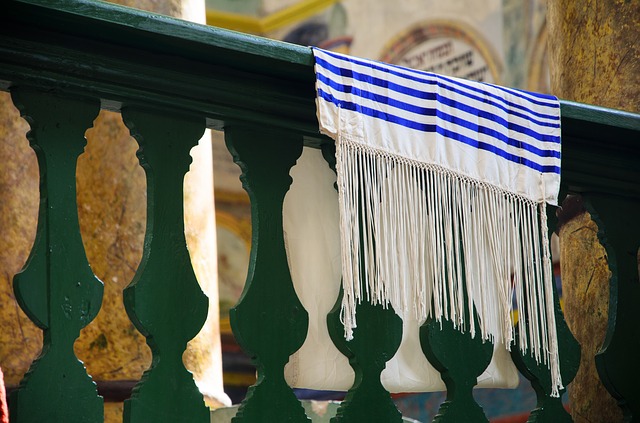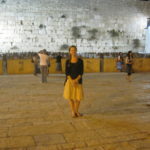Celebrating Rosh Hashana (the Jewish New Year) in Petach Tikvah, Israel

Petach Tikvah, the fifth largest city in Israel, is home to more than 210,000 people. Though only 35% of the population of the city identifies as religious, the presence of religious people is incredibly visible just walking down the street. Religious women stand out obviously through their especially modest dress, and men through their tztzit—which look like strings hanging from beneath their shirts—and kippot, or yarmulkes, on their heads.
Within the city there are nearly 300 synagogues, each with its own unique community filling it every week. Some minyans, or groups of people praying, take place in traditional synagogal buildings. However, others meet in trailers, school building classrooms and even gymnasiums. There are all kinds of ethnic backgrounds within these individual Jewish communities, including Russian, Yemenite, Ethiopian, Anglo Saxon, and Moroccan, to name a few.
I grew up in an egalitarian Jewish community in which men and women both count in services and participate equally.
One distressing element of Petach Tikvah’s reasonably large and incredibly ethnically diverse Jewish community is its lack of much of anything in the middle of the road in terms of religious observation. For all of its religious communities, there is little other than variations on Orthodox services, in which women’s participation does not count. Egalitarianism in services here is hard to come by, a reality that is a bit stressful for a woman like me.
I grew up in an egalitarian Jewish community in which men and women both count in services and participate equally. As much as I appreciate the Jewish community here, I feel the lack of egalitarianism in the religious community, which makes it difficult for me to find my place. There are a handful of egalitarian services for secular (non-religious) Israelis here within their neighborhoods for the High Holidays, but that’s about as good as it gets.
Egalitarianism in services here is hard to come by, a reality that is a bit stressful for a woman like me.
I began grappling with this reality recently when I faced the decision of where to attend High Holy Day services for the holiday of Rosh Hashanah, the Jewish new year. No matter what services I chose to attend, I ultimately had to choose between some form of mechitza, or barrier, blocking my vision of and ability to truly participate in the service. As someone who knows how to read Torah well and even lead services, sitting behind any kind of wall that blocks me from seeing and really being part of any prayer service is a bit uncomfortable.
It is a reality that I need to get used to for my year here in Petach Tikvah. I’m sure it will make me appreciate the Jewish communities I’ve been a part of in the States so much more when I eventually return, but the gender separation and lack of female participation here made my holiday a bit difficult.
In Tel Aviv and Jerusalem, there are a plethora of prayer options that fit the egalitarian label, many of which have sprung up more recently and are filled with young people. I could have ventured to either city to experience High Holidays that better conform to my personal customs. However, I wanted to spend the holiday in my home city, to truly experience what Petach Tikvah had to offer in the way of High Holiday services. Petach Tikvah, it seems, sticks to traditional Judaism that is more common in cities throughout the State of Israel as a whole.
Celebrating Rosh Hashana in Petach Tikvah, Israel
Ultimately, I do not regret my decision to spend the holiday at home. Despite the lack of egalitarianism in my Rosh Hashanah experience, I had a truly wonderful holiday during which I was able to fulfill all of the commanded traditions and customs. I was able to hear the Torah being chanted and the shofar blown impressively, multiple times at synagogue and again at my host family’s home.
I spent all of my holiday meals with a warm, welcoming Chabad family here whom I genuinely enjoyed spending so much time with, and who I look forward to returning to for many Shabbat dinners. The multiple course meals of salads, fish, chicken, meat, vegetables and desserts left me satiated, (actually completely stuffed!) every time. Through the pain in my belly filled to the brim, I felt right at home. Next holiday though, you’ll probably find me relaxing on the beach in Tel Aviv after an egalitarian prayer experience that’s more my speed.
Photo credit for Celebrating Rosh Hashana in Petach Tikvah, Israel by Pixabay. Jenna Ferman is a Teaching Fellow for the Masa Israel Teaching Fellows program.








